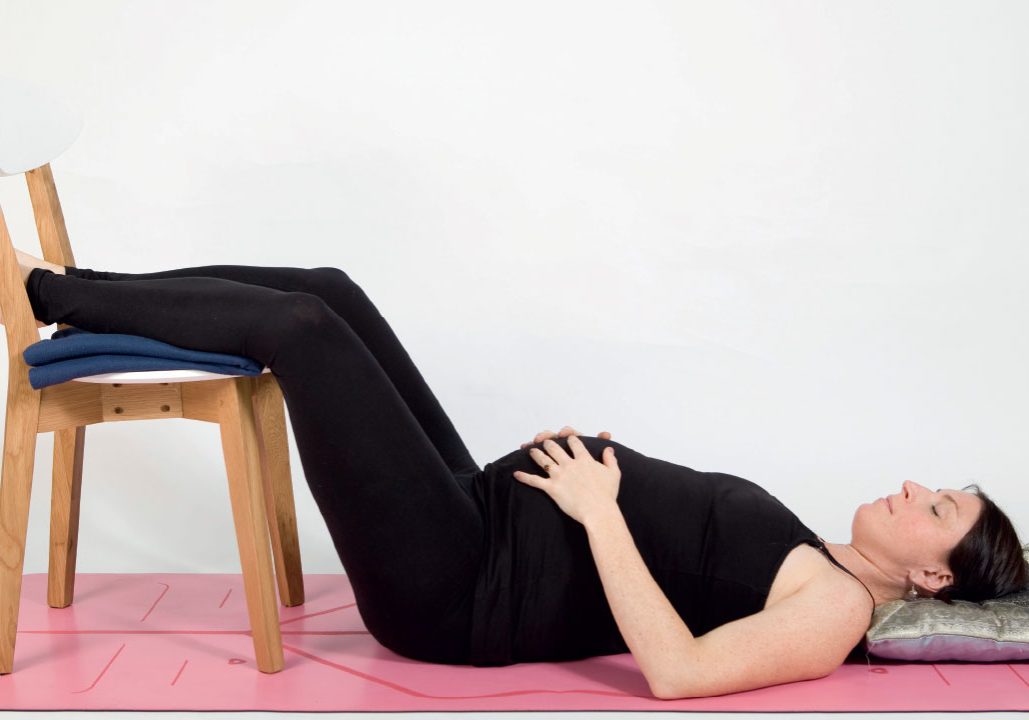
Hurting Hips
What is pelvic girdle pain and how can yoga help? By Sally Parkes
Reading time: 4 minutes
Pelvic Girdle Plan (PGP) is a multifactorial condition, which can be mentally and physically compromising both during and after pregnancy. It is a common complaint affecting an average of 44% of women during pregnancy with approximately 17% of women still experiencing pain three months after giving birth (Wuytack F, et al, 2015). It is often characterised by pain of a musculoskeletal origin which is either located at the top of the back of the pelvis (the posterior iliac crest) running down to the bottom of the gluteal muscles (the gluteal fold), but can also be located at the joint of pubic bones, known as the pubis symphysis joint, with discomfort sometimes radiating down the thighs too. When inflammation is at the front central location of the pelvis it is called Pubis Symphysis Dysfunction, the presence of which can cause challenges when crossing the legs (horizontal adduction) and taking the legs apart (hip abduction, flexion and/or extension). When pain is present at both the front and back of the pelvis it is known as Pelvic Girdle Syndrome (PGS). Standing and sitting for long periods of time can have a negative effect on pain levels as can over exercising and poor nutrition.
Other physical factors that can worsen symptoms for some women include previous lower back pain and/ or excessive lordosis and forward tilt of the pelvis, previous Pubic Symphysis Diastasis, prior Caesarean birth, the birth weight of the baby being over 4 kg, high body mass index of the mother, hypermobility and/or excessive stretching of joints prior to pregnancy. Multiples pregnancy (twins, triplets etc) as well as the number of pregnancies and maternal age are also a contributing factor in pain levels, whilst fluctuating levels of the hormones relaxin, oestrogen and progesterone may also have an effect on levels of inflammation in the pregnant body.
It has also been found that socioeconomic factors affect levels of PGP and PGS. These include employment levels and ability to take breaks at work, support given from family and/or partner, the mothers perception of pain, as well as her overall mental wellbeing prior to and during pregnancy; depression and anxiety has been shown to worsen the condition of PGP, PSD and PGS (Elden H, et al, 2016).

How yoga can help
With the appropriate application of yoga techniques including asana and pranayama however, symptoms can be reduced by encouraging an increased level of body awareness, improved postural alignment and strength, pelvic floor control and general confidence to deal with the challenges that this condition can present.
Yoga asana: Traditional yoga postures are generally beneficial for most people. However, due to the weight-bearing and hip-opening nature of certain asana, extra care needs to be taken when pelvic pain exists. In general, it is advisable to avoid any yoga asana that are known as hip[1]opening postures such as a lunge and wide legged postures. Single-legged balancing asana and deep hip openers such as Rajakapotasana (Pigeon Pose) and Baddha Konasana (Cobblers Pose) can also put undue strain on the already stressed joints of the hips. Instead, movements that require stability of the hip joint and muscle recruitment from the pelvic floor and gentle lower body stretches are more helpful in this scenario. These include Tadasana (Mountain Pose), hip-width squats, narrow Trikonasa (Triangle), standing forward bends with the hands on a wall, and lying hamstring stretches, to name a few. Adho Mukha Svanasana (Downward Dog) can also feel great for the mother as it takes the weight away from the pelvis momentarily.
Breathing techniques: Pranayama is key to managing stress levels in the body and helps us to move through yoga asana with minimum strain. Gaining control over ones’ breath can also hold the key to improving the health of the pelvic floor. The pelvic floor muscle group plays a very important role in stabilising the pelvis as it is attached to the entire pelvic rim, pubic bones, coccyx and ischium, and when it is weak, other muscles in and around the pelvis have to work harder, leading to tension. When the pelvic floor is functionally strong however, the pelvis can more easily deal with load such as that of a pregnant womb. Helpful breathing techniques in which Moola Bandha can be incorporated include Ujjayi, Nadi Shodhana, Bhramari pranayama and Golden Thread Breath.
Take deep rest: Whether pain is acute or chronic, it can be exhausting to manage, especially during pregnancy. This is because when there is inflammation in the body, stress hormones are released due to their natural pain-alleviating properties. Yet, when stress hormones flood the body continually it can start to overstimulate the nervous system, often creating sleep disturbances and more inflammation. A regular practice of Yoga Nidra (yogic sleep) though, can be very affective in moving the mother more towards her parasympathetic state where she can rest. Taking rest in a supported reclined or side-lying position can also help to take weight off the pelvis too, giving the mother much needed respite.
Sally Parkes BSc is a senior yoga teacher who runs yoga teacher trainings and CPDs in women’s health. Quote SALLY SEPTEMBER through September 2023 for a 10% discount on her pregnancy yoga teacher trainings. Visit: sallyparkesyoga.com or connect on Instagram @sallyparkesyogaschool


